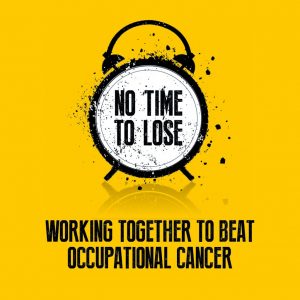 In the months leading up to March 2020, the Health and Safety Executive (HSE) is carrying out proactive inspections in businesses where welding takes place to check that risks are being appropriately managed, and has offered some advice on interim arrangements for businesses.
In the months leading up to March 2020, the Health and Safety Executive (HSE) is carrying out proactive inspections in businesses where welding takes place to check that risks are being appropriately managed, and has offered some advice on interim arrangements for businesses.
Eight hundred proactive HSE inspections are planned on metal fabrication businesses during the months leading up to March 2020.
Half of those inspections will take place in February 2020 and the HSE has estimated that the initiative will hit 1 in 15 fabrication premises.
Welding fume is one of the HSE’s priority health targets as are metal working fluid mists.
The HSE is emphasising that all welding fume can cause lung cancer, and potentially kidney cancer, so employers must put controls in place.
The Control of Substances Hazardous to Health (COSHH) regime provides the legal basis to help ensure exposure to any welding fume released is adequately controlled.
The HSE has published revised COSHH guidance, along with updated web pages on how to manage exposure to welding fume.
The HSE advises employers to carry out a full risk assessment before anyone starts welding work and notes that the Breathe Freely in Manufacturing Welding Fume Control Selector Tool can help identify the required controls.
Exposure to welding fume can be harmful so HSE inspectors will expect businesses to be able to demonstrate that they are properly protecting workers’ health.
However, the HSE says it recognises the changes might mean businesses need to plan for buying and implementing equipment if they don’t already have it in place.
The HSE recently said, “If you have already ordered new local exhaust ventilation (LEV) equipment but are waiting for it to be installed, then make sure you have an interim plan in place to minimise exposure, such as the provision of suitable respiratory protective equipment (RPE)”.
Contact us if you require guidance.
 Personal Protective Equipment (PPE) is provided by employers so employees can carry out their job. There are responsibilities that employees must take responsibility for when dealing with PPE. See previous blog Link.
Personal Protective Equipment (PPE) is provided by employers so employees can carry out their job. There are responsibilities that employees must take responsibility for when dealing with PPE. See previous blog Link.
The PPE Regulations stipulate that companies are unable to charge for PPE (under section 9 of the Health & Safety at work Act 1974 – see ACOP link below).
28 Under section 9 of the HSAW Act, no charge can be made to the worker for the provision of PPE which is used only at work. Section 9 of the HSAW Act states:
‘No employer shall levy or permit to be levied on any employee of his any charge in respect of anything done or provided in pursuance of any specific requirement of the relevant statutory provisions’. Section 9 applies to these Regulations because they impose a ‘specific requirement’, for example to provide PPE. It also relates to all charges including returnable deposits. An employer cannot ask for money to be paid to them by an employee for the provision of PPE whether returnable or otherwise.’
29 If employment has been terminated and the employee keeps the PPE without the employer’s permission, then provided it has been stipulated in the contract of employment, the employer may be able to deduct the cost of replacement from any wages owed.
From guidance, levy’s or deposits are not be appropriate, so therefore we would deter this course of action.
If PPE is constantly being asked for as it is defective, consider discussing defective wear with the supplier or the manufacturer. Request a credit or replacement FOC as they are not fit for purpose under Trading Standards.
If employees are asking for frequent replacement of PPE, consider looking to discreetly mark the item with UV marker pen with a serial number much the same as asset tags on company property to check that the item presented for replacement are those that were recently issued.
If there are repeat offenders this would need to go down the HR disciplinary route.
Contact us should you wish to discuss this topic.
 With the recent heat waves, thermal comfort in the workplace is now becoming something of a challenge for many employers. Whilst there is no maximum workplace temperature specified in the UK, the Workplace (Health, Safety and Welfare) Regulations 1992 state that workplaces shall be maintained at a ‘reasonable’ temperature. What is ‘reasonable’ will depend upon the nature of the work, but according to the HSE, an acceptable level of thermal comfort lies somewhere between 13°C and 30°C.
With the recent heat waves, thermal comfort in the workplace is now becoming something of a challenge for many employers. Whilst there is no maximum workplace temperature specified in the UK, the Workplace (Health, Safety and Welfare) Regulations 1992 state that workplaces shall be maintained at a ‘reasonable’ temperature. What is ‘reasonable’ will depend upon the nature of the work, but according to the HSE, an acceptable level of thermal comfort lies somewhere between 13°C and 30°C.
Workers likely to be most at risk include catering staff, outdoor workers e.g. horticultural workers, maintenance personnel, process workers and employees who must wear personal protective equipment (PPE) such as breathing apparatus or impermeable clothing. Employees working in offices which do not have air conditioning are also likely to be affected by hot weather.
It is important to continue wearing PPE during extreme temperatures. However, encourage staff to remove them during break times to cool off, sit in the shade or a cool area and drink plenty of fluids, this will help to reduce heat stress. Heat stress is where the body is under stress from over heating. Heat related illnesses include heat cramps or heat stroke, each with its own symptoms and treatments. Symptoms can range from profuse sweating, heat rash, fainting, loss of concentration.
Your risk assessment must take into account factors such as temperature to protect your employees, as well as helping you stay on the right side of the law.
If you require advice please contact us.
In the past PPE was governed by (EU) 2016/245 – it is now being implemented as a legally binding regulation, with some amendments. For example – hearing protection has been moved from category II to Category III – essentially it has now been classified as more important to protect your teams hearing.
PPE Category Classifications
| PPE Category | Category Description | Activity | Above the neck PPE product examples |
| Category I | Simple PPE (PPE designed to protect users against minimal risks) | Placing product on the market – manufacturers self-declaration | Sweatbands Cold Weather Hood System Sun Capes |
| Category II | Intermediate PPE (PPE not covered within category I or III) | Initial Product approval | Safety spectacles Industrial helmets Bump caps |
| Category III | Complex PPE (PPE falling under this category includes exclusively the risks that may cause very serious consequences such as death or irreversible damage to health) | On-going surveillance through testing or factory auditing | Respiratory PPE Industrial helmets claiming Molten Metal and Electrical Resistance(EU) 2016/425 PPE Regulation change: Hearing Protection |
PPE is equipment that will protect the user against health or safety risks at work. It can include items such as gloves, safety helmets, eye and ear protection, high-visibility clothing, safety footwear and safety harnesses. It also includes respiratory protective equipment (RPE)
A risk assessment will help to identify where you need to look at certain risks and these control measures in more detail. These control measures do not have to be assessed separately but can be considered as part of, or an extension of, your overall risk assessment. It is the Last Resort to use PPE, other avenues must also be considered.
Walker Health and Safety Services Limited have teamed up with Active Workwear to bring you a PPE info graphic. I would recommend that you issue to employees and display on noticeboards as the information could be beneficial to them.
Contact Walker Health and Safety Services should you require further information.
null
null
 The British Association of Dermatologists (BAD) currently runs a national campaign around skin cancer called Sun Awareness, which includes national Sun Awareness Week in May. This campaign is overseen by the BAD’s Skin Cancer Prevention Committee, comprised of leading medical professionals with expertise in skin cancer, vitamin D and public health messaging.
The British Association of Dermatologists (BAD) currently runs a national campaign around skin cancer called Sun Awareness, which includes national Sun Awareness Week in May. This campaign is overseen by the BAD’s Skin Cancer Prevention Committee, comprised of leading medical professionals with expertise in skin cancer, vitamin D and public health messaging.
Sun Awareness Week (6-12 May) encourages people to regularly self-examine for signs of skin cancer and teaches them about the dangers of sunburn and excessive tanning.
Worldwide, non-melanoma skin cancer is the most frequently diagnosed cancer, with an estimated 2-3 million cases registered every year.
Ultraviolet radiation (UVR) is a risk that particularly affects outdoor workers, who receive 5-10 times the yearly sun exposure of indoor workers.
Walker Health and Safety Services Limited is supporting Sun Awareness Week and the Institution of Occupational Safety and Health’s (IOSH) global campaign to tackle occupational cancer – ‘No Time to Lose’, which aims to get carcinogenic exposure issues more widely understood and help businesses take action by providing free practical resources.
Find out more about the campaign at www.notimetolose.org.uk/sun-awareness, follow @_NTTL on Twitter, and use the hashtag #SunAwarenessWeek.
Resources for your company can be downloaded here. https://www.notimetolose.org.uk/free-resources/resource-library/pack-2-solar/
Also, contact us for further information.